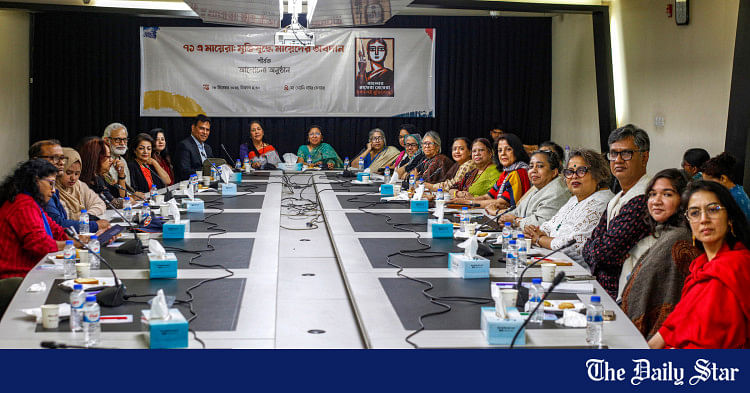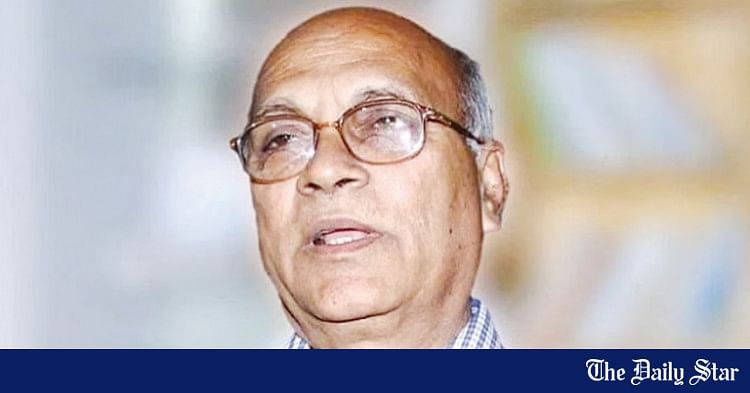Dr. Yunus's role in 1971 Liberation War
BSS
Dhaka
Published: 30 Dec 2024, 21: 01
When the Liberation War broke out in Bangladesh in 1971, Professor Dr. Muhammad Yunus, currently the chief adviser to the interim government, engaged himself in building public opinion in favour of the war while teaching at the Middle Tennessee State University in the United States (US).
There, he organised Bangalees to support Bangladesh independence and raised funds, as well as led various programmes to draw attention of the diplomats from various countries working at the United Nations, including the US administration.
He regularly kept in touch with the editors and journalists of local newspapers and television stations there to convey news of the freedom-loving people of Bangladesh through the US media.
Professor Yunus ran the Bangladesh Information Center with the Bangladeshi diaspora to gather support for the Liberation War. He used to publish the 'Bangladesh Newsletter' from his home in Nashville, USA.
The Nobel Peace Prize-winning economist has mentioned his eventful days during the Liberation War in his autobiography, 'Banker To The Poor'.
He wrote, 'On March 25, 1971, the Liberation War broke out in Bangladesh and our plans to return there were abandoned. I devoted myself to the cause of the liberation. Like all Bengalis, I was keeping a close watch on the events in Dhaka. The fateful day, I came back to my apartment to have lunch and turned on the radio to get the latest news. There was a brief item stating that the Pakistani army had moved in to stop the political opposition against the government of Pakistan ..."
At that time, Dr Yunus wrote, while he was changing his clothes, he stopped, rushed to the phone and called one expatriate Bengali Dr Zillur at Nashville.
The Nobel Laureate asked Dr Zillur to turn on the radio. He told him that he was going to his house immediately and that he should contact all other Bengalis.
Referring to assembling of Bengalis at Zillur's house in Nashville, USA, on March 26, Dr Yunus wrote, 'Within an hour, I was at Zillur's house. At that time, there were six Bengalis from East Pakistan in greater Nashville (including myself). We all assembled in his house to decide what to do. We carried on collecting information from all sources. The message was clear; the Pakistani army wanted to crush Bengalis once and for all."
"We collected all the information we could. We were terribly frustrated. We tried to sum up the situation and come to some decision. There was no clear consensus on the situation. . . Finally I could not take it anymore and said, we have all the details we need. Bangladesh has declared independence," he said in his book.
"Now we have to decide whether we will consider ourselves citizens of this new country or not. Everybody has the right to choose. I declare my choice. My choice is Bangladesh. I declare my allegiance to Bangladesh. If there is anyone else who would like to join me in this, he is free to do so. Those who will not join, I would consider them as Pakistanis and enemies of Bangladesh," he wrote.
"There was silence. Everyone was surprised taken aback by the way I posed the question of allegiance. It was such a charged situation that soon everybody opted for Bangladesh. I suggested that we form a 'Bangladesh Citizens' Committee' and issue a press release immediately for the Nashville print and electronic media."
Three things were decided in that meeting:
1. We would try to meet all the news reporters of the local TV stations, and the editors of local daily newspapers to explain our decision and seek support for the Bangladesh cause.
2. We would immediately put $1000 each to create a fund to carry on the struggle.
3. We would put 10 percent of our salary in the fund every month until Bangladesh became independent. If needed, we would increase the percentage.
Professor Yunus further wrote in his autobiography, "On the next day (27 March), we made appointments with local TV stations and dailies. I was elected secretary of the Bangladesh Citizens' Committee and spokesperson for the group. Local TV stations never get a chance to develop international news stories, so they received us with enthusiasm. For them we represented red-hot international news with a local angle to it. I was a teacher in a local university; the other five were medical doctors in city hospitals, and here we were declaring ourselves citizens of a country not yet born. What an exciting news item!".
He wrote: "We were interviewed by the dailies. Our pictures were taken. We were also interviewed by all the three local TV channels. We then re-assembled at Zillur's house in the afternoon to watch the evening news. Our guess was right we were treated with importance. My interview was telecast in full during the local news. The interviewer asked, 'Do you have a message for the Tennesseans?' 'Yes, I do, I said. 'Please write to your congressmen, write to your senators immediately to stop military aid to Pakistan. Your arms and ammunitions are being used to kill innocent unarmed civilians of Bangladesh. Please ask your president to put pressure on Pakistan to stop genocide in Bangladesh."
He wrote that he reached Washington on 28 March to participate in the Bengali protest program in Washington on 29 March.
"That afternoon, we all gathered at the steps of the US House of Congress to demonstrate. I brought all my festoons. Bengalis came from distant places. Washington and New York had the biggest groups until Bengalis from Detroit arrived. I was surprised to see so many Bengalis from Detroit. Most of them were Sylheti workers from Detroit factories."
Professor Yunus also wrote- 'It worked like magic. The demonstration on the steps of Capitol Hill was a grand affair. We were noticed by US legislators. Congressional aides took time to be briefed on the situation and our demands. The news media was especially active; television cameras covered the rally and took on-the-spot interviews, and news reporters had a field day."
He further wrote, "30 March 1971: Shamsul Bari and I were given the responsibility of visiting all the embassies, meeting the ambassadors or their representatives, explaining our cause, and requesting recognition of Bangladesh as an independent state. It was a very interesting experience for both of us. We went to many embassies in one day".
Since the formation of the Citizens' Committee, Dr Yunus and other Bangladeshis had been running the Bangladesh Information Center to gather support for the liberation war in the United States. He used to publish the 'Bangladesh Newsletter' from his home in Nashville.
Prof Yunus wrote, "Shamsul Bari became its secretary general. He published the first issue of the Bangladesh Newsletter. I took it over from him and started publishing the newsletter regularly from my Nashville apartment at 500 Paragon Mills Road. My apartment virtually became the communication centre. The phone would never stop ringing whenever I returned from my long campaigning trips. Calls came from all over North America and the UK. All Bengalis in North America wanted to know every detail of the war every day".
"Through the efforts of the Bengalis in Washington, a 'Bangladesh Information Center' was set up near the hill to do the lobbying in the House and the Senate. I took up the responsibility of running the Information Center for the initial period and then went on the road to organize teach-in workshops in university campuses all over the United States, where we also set up Friends of Bangladesh Committees."
Dr Yunus continued in his book: "During those nine months we drew a very clear picture of the future Bangladesh in our minds, which became sharper and more vivid with each passing day. We wanted to uphold democracy, to establish the majesty of the will of the people which would be expressed in a free and fair election. We wanted to ensure people's right to fashion their lives as they wanted. We wanted people to be free from poverty. We dreamed of a life of happiness and prosperity for all citizens".
He further wrote that "When on 16 December 1971, Bangladesh won its war of independence, I was eager to return and help rebuild my country. The war had taken a heavy toll. Three million Bangladeshis were killed, ten million had left the country to find safety in neighbouring India and this created enormous refugee camps of misery and destitution. Millions more became victims of rape and other atrocities committed by the Pakistani army. By the time the war was over, Bangladesh was a devastated country. The economy was totally shattered. Millions of people needed to be rehabilitated. I felt that I had to go back and participate in the nation-building. I thought I owed it to myself."
Later, Dr Yunus returned to Bangladesh and was appointed to the government's Planning Commission.
He afterwards established the Grameen Bank for the welfare of the marginalized people who were backward in the society.
Dr. Yunus has been working since childhood with the vision of social change and humanitarian service. Because of that vision, he joined the Liberation War, and in the same way, he established Grameen Bank.
Talking to BSS, Grameen Bank Chairman and North South University Vice Chancellor Professor Abdul Hannan Chowdhury said Professor Yunus being imbued with patriotism while teaching in the United States in 1971, became vocal in favor of Bangladesh's independence.
"Prof Yunus organised Bengalis for the Liberation War and raised funds. He returned to the country after independence. The purpose of his return to the country was to join humanitarian service and work for the marginalised people," he said.
Abdul Hannan Chowdhury has been working with Nobel Peace Prize-winning economist Dr. Yunus on Grameen Bank and microfinance for a long time.
He said Dr. Yunus always liked to work with the vision of social change and humanitarian service.
"Just as that vision inspired him to participate in the Liberation War, it also encouraged him to establish Grameen Bank. Grameen Bank was established with the goal of changing the lives of the poor, helpless, especially women, in independent Bangladesh. The bank now has 10,666,000 members", he added.

en.prothomalo.com







































